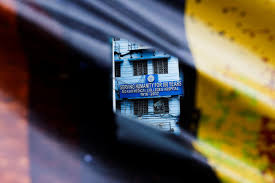In recent months, the medical community in India has been shaken by the harrowing news of a brutal assault on a doctor in Kolkata. The incident, which involved the rape of a young female physician, has sparked outrage and a renewed focus on the alarming issue of violence against medical professionals. This tragic event brings to light a deeper, systemic failure that has long plagued the healthcare system: the unfulfilled promise of ensuring the safety and security of physicians.
Table of Contents
The Broken Promise of Safety
The issue of violence against doctors and healthcare workers is not new. For years, medical professionals in India have faced increasing incidents of aggression and violence from patients and their families. Despite numerous pledges and discussions at various levels of government and medical bodies, the promise to safeguard healthcare workers remains largely unmet. The Kolkata incident is a stark reminder of the urgent need for effective measures to protect those who dedicate their lives to healing others.
The Root Causes of Violence Against Doctors
Understanding the root causes of violence against medical professionals requires a multi-faceted approach.

- Rising Patient Expectations: With the growing demand for medical services and the increasing complexity of healthcare, patients and their families often have high expectations from doctors. When these expectations are not met, frustration can escalate into aggression.
- Inadequate Healthcare Infrastructure: The Indian healthcare system is often overburdened and under-resourced. The lack of adequate facilities and the high patient-to-doctor ratio can lead to delays and perceived negligence, exacerbating tensions between patients and medical staff.
- Communication Gaps: Poor communication between doctors and patients can lead to misunderstandings and dissatisfaction. When patients feel that they are not being adequately informed or their concerns are not being addressed, it can result in hostile behavior.
- Lack of Legal Protection: Despite various legal frameworks intended to protect doctors, enforcement is often weak. The lack of stringent legal measures and effective implementation can leave medical professionals vulnerable to violence.
The Impact on Medical Professionals
The repercussions of such violence extend far beyond the immediate physical and emotional trauma experienced by the victims. The broader impact on the medical community includes:
- Psychological Trauma: The fear of violence can lead to significant psychological stress for doctors, affecting their mental health and overall well-being. This stress can, in turn, impact their professional performance and patient care.
- Workplace Environment: The pervasive threat of violence can create a hostile work environment, which can diminish job satisfaction and lead to higher rates of burnout among healthcare professionals.
- Medical Neglect: The fear of violence might deter doctors from working in high-risk areas or regions with inadequate safety measures, potentially leading to medical neglect in underserved areas.
The Role of Policy and Governance
Addressing the issue of violence against doctors requires a comprehensive policy approach and effective governance. Several measures can be taken to improve safety and ensure that the promise of protection is fulfilled:
- Stronger Legal Frameworks: Governments need to introduce and enforce stricter laws to protect healthcare workers. This includes creating specific legal provisions that address violence against medical professionals and ensuring swift justice for perpetrators.
- Enhanced Security Measures: Hospitals and clinics must implement robust security protocols, including surveillance systems, trained security personnel, and emergency response procedures. These measures can help deter potential aggressors and protect staff.
- Training and Awareness: Training programs for both medical professionals and patients can help bridge communication gaps and manage expectations. Educating patients about their rights and the limitations of medical services can reduce the likelihood of confrontations.
- Support Systems: Establishing support systems for doctors who experience violence is crucial. This includes providing psychological counseling, legal assistance, and a supportive work environment that acknowledges and addresses their trauma.
- Public Awareness Campaigns: Raising public awareness about the challenges faced by medical professionals and the importance of respecting healthcare workers can help foster a culture of empathy and understanding.
The Path Forward
The Kolkata doctor rape incident has ignited a crucial conversation about the safety of medical professionals in India. To ensure that such promises are not left unfulfilled, a concerted effort is required from all stakeholders, including the government, healthcare institutions, medical associations, and the public.
It is imperative that we move beyond mere promises and take actionable steps to protect those who are on the front lines of our healthcare system. By addressing the root causes of violence, implementing effective policies, and fostering a culture of respect and support, we can create a safer environment for doctors and ultimately improve the quality of healthcare for all.
The tragic events in Kolkata should serve as a wake-up call. It is time for a decisive shift from rhetoric to action, ensuring that the safety of medical professionals is not an afterthought but a fundamental priority. The promise to protect healthcare workers must be upheld, not just in words but through tangible, effective measures that make a real difference in their lives and their ability to provide care.







